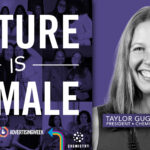Media buyers suddenly have a lot more creative levers to pull. What started with DCO has exploded into an entire industry thanks to AI. Media buyers can make new creatives from scratch, personalize creatives, assemble creatives in real time based on audience data, swap out products, backgrounds, and music, make a CTV creative out of video or even still images, and much more.
While our industry has talked a lot about the benefits of more relevant personalized ads, we haven’t addressed the reality. A whole lot of processes will be affected by creative tech, and brands will get more out of these new tools if they take some time to reconfigure their strategies and workflows rather than try to stuff the tech into the current system.
The New Role of the Creative Team
Because linear TV held on for so long, many brands still operate with a creative agency that is somewhat separate from their media agency. We’ve had DCO on digital for a long time, but it has largely lived in lower-cost banners on the web. Amazon, Meta and Google offer lots of creative automation that brands have taken advantage of with low-value imagery, but 15 second commercials were still the domain of the creative team.
CTV is the catalyst to change that. Suddenly, high quality video assets can be generated on the fly, and creatives can be assembled based on audience and product data, not just a brand concept. And all of this is happening on the media side – media agencies have major creative capabilities at the click of a button.
To survive, creative agencies will need to embrace creative tech – but that means they’ll also need to be a much more active part of the media buying process. In an ideal world, creative and media teams will work together in real time – it benefits the advertiser and the audience.
There are a few reasons why creative-media collaboration is critical:
-
Creative teams are professionals – The ARF recommends “co-creation” between humans and AI, which will be much more effective if the human is a professional creative. Media teams are trained on optimization and targeting, not design.
-
Creative teams can learn what works faster – While many creative teams have resisted being measured, real-time creative automation and AI are bound to change that. Media teams can provide creatives with tons of insights that they can use to shape new approaches, increasing performance.
-
Media teams do better with a guide – Creative tech in the hands of media teams is powerful and exciting, but also a bit unwieldy. Rather than have creative teams miss obvious design opportunities or make rookie errors, bringing in creative professionals can help drive media teams in the right direction faster.
How to Approve Infinite Variables
In theory, DCO and AI unlock infinite creative possibilities. Advertisers are moving from a handful of creative designs that can be approved and then resized and reformatted as needed to potentially thousands of (or infinite) creative designs that could be built on the fly. We’re seeing this shift happen today, and ignoring it simply creates a backlog of approvals or a complete disconnect between internal teams.
Approval processes exist for a reason. Brands want to uphold their image, ensure quality and brand cohesion. It’s also important for brands to ensure that creatives comply with internal and government requirements including diversity standards or disclaimers. Even with creative review automation, brands also need to rescope their approval process. Rather than consider individual assets, brands need to define ways to approve templates, raw assets, inputs and prompts that can be mixed and matched to generate entirely new creatives in real time. It would make a lot more sense for approvals to ensure that the data being used is privacy safe and compliant, that there are proper constraints and requirements for a prompt (e.g. the creative must include the following disclaimer..”) and that the creative generation process ensures copyrights are considered than it does to review everything that the tech spits out.
Adopting Real-Time Creative Measurement
When I started in digital advertising, we’d compare creative performance at the end of a campaign and create a wrap report. The green banner performed better than the red one. Or the video did better than the static image. Those days seem quaint now. We’re close to a reality where measurement is a seamless part of the creative process that actually shapes creative changes using direct feedback.
Marketers need a new way to measure and drive creative performance when there are thousands of variations on a creative and when creative is being updated all the time. AI can measure creative variables individually and in combination – determining if one tagline worked better than the other, together with this or that product image and background. Marketers then need to find a way to take these insights and put them back into the creative process to make a continuous feedback loop. No need to wait until the end of the campaign if creative can be adjusted now.
Advertisers have a huge opportunity with creative tech, but like we’ve seen with every new wave of innovation, the processes and measurement that goes with it are just as important. Creative tech can deliver performance improvements on its own, but advertisers will gain a lot more value from rethinking their processes to make the most of it.











